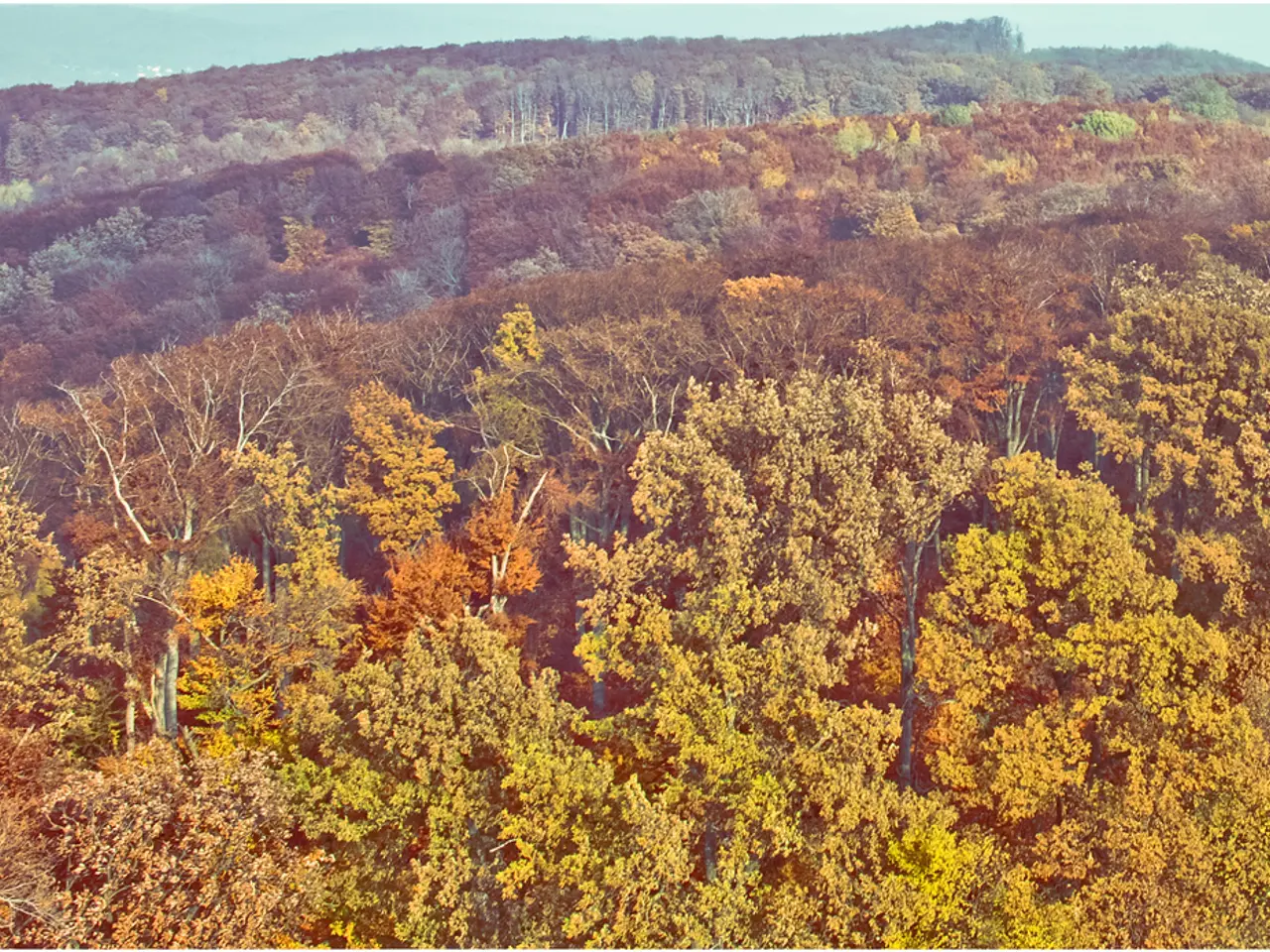Shift in Horticulture: Gardeners Face a Dilemma Due to Climate Change - Lemon Trees Over Apples?
As the UK's climate becomes warmer and drier, gardens across the nation are adapting their planting strategies, particularly in the selection and cultivation of fruit trees. This transition is evident as traditional choices are supplemented or replaced by species and varieties better suited to the changing conditions.
## Key Strategies for Adaptation
**Drought-Resistant and Heat-Tolerant Varieties** Gardeners and professional landscapers are turning to fruit trees and perennials from Mediterranean, South American, and Australasian regions, which are naturally adapted to hotter, drier climates. Examples of these fruit trees include figs, olives, pomegranates, certain plums, and cherries. Selecting cultivars with proven drought tolerance is becoming standard practice, and some historic gardens are being replanted with these resilient species to ensure future productivity and sustainability.
**Hardening Off and Lower Maintenance Practices** There is a growing emphasis on “toughening up” plants by reducing irrigation after establishment, encouraging deeper root systems, and greater resilience to dry spells. This means choosing fruit trees that can thrive with minimal intervention once established, and avoiding over-watering or excessive feeding, which can make plants more vulnerable to stress.
**Soil Improvement and Mulching** Improving soil structure organically—without synthetic fertilizers—helps retain moisture and supports healthier root development. Mulching is widely recommended in urban and community gardens to conserve water, suppress weeds, and protect soil from extreme temperatures. These practices are critical for fruit tree success in increasingly variable UK climates.
**Integration of Water Features and Sustainable Drainage** The incorporation of ponds, rain gardens, and sustainable drainage systems (SuDS) in garden design helps manage both drought and deluge, creating more resilient microclimates for all plants, including fruit trees. These features buffer against temperature extremes and reduce runoff during heavy rainfall, indirectly supporting fruit tree health.
## Notable Examples and Inspiration
**Historic and Public Gardens** Historic gardens, such as those managed by the Royal Horticultural Society (RHS), are assessing their holdings and propagating plants that can withstand future climatic stresses. The Ventnor Botanic Garden on the Isle of Wight has planted the first citrus grove in the UK, while Tom Brown, head gardener at West Dean in West Sussex, is responsible for a collection of over 100 different varieties of exquisitely trained fruit trees.
**Dry Garden Pioneers** Gardens like Beth Chatto’s and Hyde Hall’s dry gardens are celebrated for their drought-tolerant perennial plantings. Their principles—minimal irrigation, thoughtful plant selection, and soil management—are directly applicable to fruit tree cultivation in a changing climate. These gardens demonstrate that with the right species and care, productive plants can thrive even as conditions become more challenging.
## Summary Table: Adaptation Strategies for UK Fruit Tree Gardens
| Strategy | Description | Relevance to Fruit Trees | |----------------------------------|-----------------------------------------------------------------------------|----------------------------------------| | Drought-resistant selections | Mediterranean, Australasian, South American species/varieties | Ensures productivity in hotter summers[4] | | Minimal irrigation | Water deeply at establishment, then reduce | Promotes deep roots, drought tolerance[2] | | Soil improvement & mulching | Organic matter, no synthetic fertilizers, mulch to retain moisture | Supports root health, reduces stress[5] | | Integrated water management | Ponds, rain gardens, SuDS | Buffers against drought/flood, microclimate[1][5] |
## Conclusion
UK gardens are proactively adapting to climate change by selecting fruit trees and other plants suited to hotter, drier conditions, reducing water use post-establishment, improving soils, and integrating sustainable water management features. While specific fruit tree examples are less detailed in the current results, the overarching trend is clear: resilience through diversification, reduced intervention, and embracing species from climates similar to the UK’s projected future[2][4]. Historic and public gardens are leading the way, providing models for private gardeners to follow.
- In response to the warmer and drier climate in the UK, gardens are incorporating drought-resistant and heat-tolerant fruit trees from Mediterranean, South American, and Australasian regions into their planting strategies.
- The practice of "hardening off" plants, which involves reducing irrigation after establishment and encouraging deeper root systems, is becoming commonplace to improve the resilience of plants to dry spells.
- Improving soil structure organically, using organic matter and mulching, helps retain moisture and supports healthier root development for fruit trees.
- Incorporating ponds, rain gardens, and sustainable drainage systems (SuDS) in garden design helps manage both drought and deluge, creating more resilient microclimates for all plants, including fruit trees.
5.Historic gardens, such as those managed by the Royal Horticultural Society (RHS), are taking steps to increase the resilience of their fruit tree plantings by selecting species that can withstand future climatic stresses.
- Gardens like Beth Chatto’s and Hyde Hall’s dry gardens are renowned for their drought-tolerant plantings, demonstrating that productive plants can thrive even as conditions become more challenging, and these principles are directly applicable to fruit tree cultivation in a changing climate.




